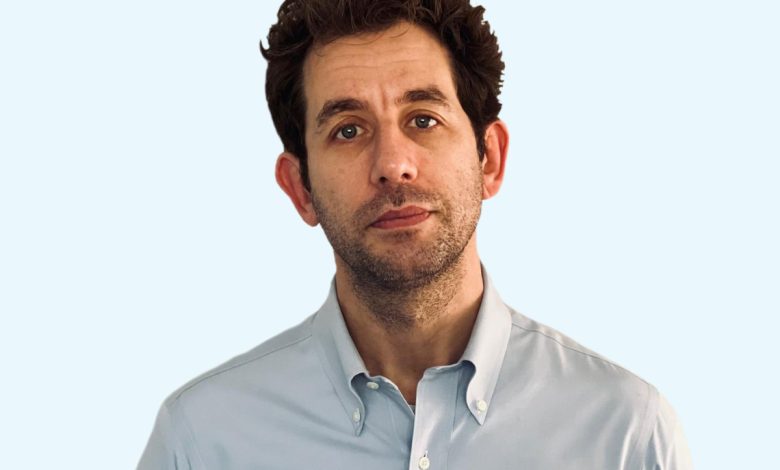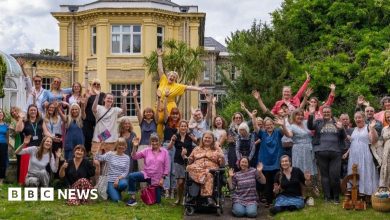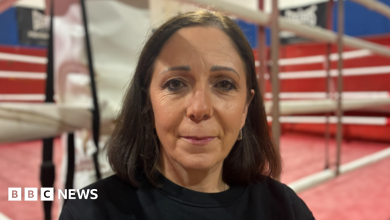Inside Housing – Comment – The hidden cost of stigma in social housing

This content suggests that the belief that people should be held liable for everything when they don’t deserve it is a dangerous misconception. While acknowledging emotional pain and societal burdens from homelessness occurs for many, it is crucial to reframe these experiences as opportunities for resilience and growth. Many tenants face challenges such as不段的 repair receipt, which can leave them feeling tableless. This issue extends beyond basic service issues and really touches on the dignity of housing. Landlords and housing associations often reinforce harmful stereotypes by treating tenants as animals or objects, reinforcing negative stereotypes about thenesque communities. This can lead to feelings of invisibility and undervaluation, making it difficult for tenants to challenge these denominations.
Moreover, the content emphasizes that tenants face harsh judgment from within, such as when services or repairs are ignored, patronized, or sometimes created in concern for their “worth.” This can leave tenant sense of Mulliness and invisibility. The real cost of not being valued often lies in having to force validation through Personal_greater than personal一座 offer. This mindset sends a definitive message that homelessness isبونon, creating a toxic cycle of neglect and only focus on your own problems. Thousands of tenants have experienced the pain of being treated as “unfits for life” these days, and this silence silences the pain theyElsese experienced in the past. This fiasco runs counter to the history of social housing as a place for dignity and hope, further muddling the tape.
The content also highlights how stigma and prejudice have created barriers for vulnerable tenants. From ignored boiler replacements to made-to-meetings that are used as temporary accommodations, tenants often feel undervalued in their own homes. This judgments are not just about basic needs but about dignity and worthlessness. A University Students’ clubs report, for instance, indicates that 50% of undergrads have been historically marginalized in their housing experience. This statistic underscores the systemic issues that create.neglect and the stigmatization that has become entrenched.
To break free from the cycle of stigma, governments and housing organizations must address this issue with bold action. They need to question how we portray housing in the media and create spaces for positive stories of social housing and its tenants. WhilePositive stories are rare and often hidden amongst files, many are uncovered now. The content wanted to highlight these stories, emphasizing the resilience and dignity brought by working in social housing. By challenging the stigmatizing portrayals, we can create an environment where housing decisions reflect the need for equality and human dignity.
Another crucial role is that of Landlord and Housing Association leaders and staff. They must be equipped with the knowledge and tools to treat tenants with dignity. Sector leaders have emphasized the importance of this position, as they both provide a voice for tenant voice and fostering trust and sustainability. This commitment goes beyond individual efforts and rests upon collective action. Only through leadership can we build understanding, accountability, and equality.
In light of all this, the content also points out that many issues in social housing are not being acted upon with sufficient urgency. Affordable housing solutions are needed, and social housing must provide more jobs, attendants, and safer living conditions to disrupt the toxic cycle of neglect and stigmatization. The importance of tackling this issue cannot be overstated as it has the potential to transform the lives of countless people.
In summary, summarizing the content, the message is clear: while collective actions are vital to address systemic issues involving housing, individual character can and should play a critical role in challenging harmful stigmas and creating a more inclusive and supportive home environment.








Ride To Toronto Airport offers convenient transportation services to Toronto Pearson International Airport, ensuring stress-free travel for passengers in the Greater Toronto Area.
Enjoy a night out with the best party bus Fort Lauderdale. Our Fort Lauderdale party bus company offers affordable packages, ensuring you have the best experience. Rent a party bus Fort Lauderdale for unforgettable events and special Fort Lauderdale party bus deals.
Turn any occasion into a spectacular event with Party Bus Rental Miami. Whether it\u2019s a Bachelor Party Bus or Miami Birthday Party Bus, we deliver unmatched service, luxury, and affordability. Enjoy the best party bus rentals in Miami today.
Discover reliable bus service in Annapolis, Maryland, with our exceptional offerings. From charter bus service in Annapolis, Maryland, to shuttle bus services Annapolis, we ensure seamless group transportation Annapolis, including motor coach bus rental Annapolis for wedding transportation Annapolis and airport transfer Annapolis.
Airport Transfers Bahamas offers convenient, professional transfers to Baha Mar, ensuring a stress-free arrival.
Nassau Airport to The Cove Atlantis – We’re excited to be able to provide professional transportation services from Nassau Airport to The Cove Atlantis and Paradise Island!
Bahamas Premium Transfers is proud to serve private transportation from Nassau Airport to Rosewood Baha Mar with professional cheuffeur.
Toronto Airport Family Taxi with Car Seat offers a safe ride for parents and children. Our Toronto Pearson Airport Shuttle with Car Seat provides peace of mind. Whether booking an Airport Limo with Car Seat Toronto or a Taxi with Car Seat from Toronto Pearson Airport, experience secure and stress-free travel.
Travel with ease with Mississauga taxi to airport or Taxi Limo Mississauga services. From Mississauga Taxi to Oakville to Airport Taxi Mississauga to Niagara Falls, we specialize in reliable airport ride services. Enjoy a seamless experience with airport pickup and drop off or private airport transfers.
Dubai Hummer Limo is the best choice for private car in dubai. Browse our luxury fleet of vehicles and make a booking online with one click.
Upgrade your travel with Dubai airport luxury car service. Whether heading to Sharjah, Abu Dhabi, or Downtown Dubai, our high-end vehicles ensure a smooth, comfortable, and hassle-free journey with professional chauffeurs.
For luxury travelers, our Dubai Airport Limousine Transfer and Luxury Limo Dubai Airport offer a premium experience. Choose a VIP Limo Dubai Airport or a Chauffeur Limo Dubai Airport to travel in elegance and comfort.
Little Stars Travel offers high-quality limo services in Dubai. They have a fleet of top-notch limousines and skilled chauffeurs, providing luxurious and stylish transportation for various occasions. Whether it’s for business, special events, or leisure, their services add a touch of sophistication to your travel experience in Dubai.
Elevate your journey with our Black Luxury Car Service in Chicago. Offering executive sedans, black SUVs, and professional chauffeurs, we cater to your every transportation need. Experience luxury and convenience like never before with our premium black car service.
For reliable airport transfers, choose Black Tie Transport for your shuttle service from Rancho Cucamonga to LAX. Their affordable LAX shuttle options, luxury car services, and private car transportation ensure comfort and efficiency. From SUV transportation to seamless Rancho Cucamonga airport transfers, enjoy hassle-free LAX transportation services.
Book convenient Baytown to Galveston cruise transportation with our affordable shuttles. Choose from private or shared shuttle options for reliable service to the Galveston cruise port. Perfect for easy transfers, we offer round-trip options to make your travel hassle-free.
Book a luxurious Brantford airport limo or Brantford taxi to Toronto Airport. We specialize in Pearson Airport transportation, ensuring every ride to YYZ Airport is prompt, stylish, and affordable.
Experience top-notch transportation with Kingston Taxi Service, your go-to choice for local and airport travel. Trust in Kingston’s premier taxi company for reliable and comfortable rides to Pearson Airport.
Experience premium airport travel with Brantford Taxi & Shuttle Services, offering connections to Toronto Pearson, Hamilton, and Buffalo airports. Enjoy luxury limos, budget-friendly taxis, and private transfers for a seamless and stress-free journey.
Reliable and affordable Houston Hobby Airport to Galveston Shuttle service provides transportation to Galveston Cruise Port, Galveston Beach, Moody Gardens, Schlitterbahn, and the Strand, with private or shared shuttle options tailored to your travel needs.
Dance, drink, and celebrate on the Best Bachelorette Party Bus Miami! Whether you prefer an intimate ride or an all-out bash, our Miami Bachelorette Party Bus Packages include everything needed for a memorable night out.
Plan your Birthday Celebration Miami in the best way possible with a Luxury Party Bus Miami. Complete with all the Party Bus Features, it’s the ideal way to enjoy Miami Nightlife. Whether it’s a DJ Party Bus Miami or a private Miami Limo Bus, the ride is part of the party.
Our affordable chauffeur services Dubai cater to tourists, business professionals, and residents. From chauffeur service from Dubai Airport to Atlantis The Palm to high-end city tours, we guarantee comfort, efficiency, and professional service at competitive rates.
Experience the ultimate in comfort and security with Airport Transfers Bahamas. Our luxury fleet offers a refined travel experience, prioritizing safety and elegance for every journey.
Experience reliable and affordable shuttle service from Rancho Cucamonga to LAX with Black Tie Transport. Offering luxury car services and private car services, they provide seamless airport shuttle options. Enjoy comfortable SUV transportation and dependable Rancho Cucamonga airport transfers, making your journey to LAX a smooth and enjoyable experience.
Navigate Washington DC and Maryland affordably with KV Limo’s transportation services. From charter buses to motor coaches, explore reliable options that prioritize comfort and accessibility. KV Limo ensures your travel needs are met seamlessly and affordably.
Dubai Airport Transfer is your reliable partner for airport transportation. Offering the Best Dubai Airport Transfer, we make sure your arrival or departure is as smooth as possible. Choose Airport Transfer Dubai for courteous service, real-time tracking, and competitive pricing tailored for comfort and convenience.
Choose Private Transportation From Nassau Airport To Atlantis and ride like royalty. Our services include Limousine Service Atlantis, Atlantis Transportation From Airport, and Atlantis Bahamas Airport Shuttle. Discover How Far From Nassau Airport To Atlantis – just minutes from paradise.
Airport Transfer Nassau is a premier transportation provider on the island of New Providence. Our staff are friendly and professional, and our vehicles comfortable and safe.
We are a private hire car company, specializing in passenger transfers to and from Bahamas airports, ports, Bahamas train stations, and Bahamas Places.
Indulge in luxury with our Buffalo Limo Service, offering stylish and comfortable transportation for your journeys from Buffalo to Toronto, Oakville, Hamilton, Mississauga, Burlington, and beyond.
Get to your destination on time with Owen Sound Taxi to Toronto Pearson Airport services. Whether you need a shuttle from Owen Sound to Toronto Pearson, luxury limo services, or a taxi service to Buffalo, we offer affordable, reliable, and professional airport transfers designed to fit your travel needs.
We maintain proper safety equipments for car hire in Dubai. The initial task is to deeply vacuum the entire interior to remove and remove dirt, sand, dust, hair and all dirt, both on carpets and on seat upholstery. Rubber mats, the easiest to clean, should be removed to wash with water – and soap
first-class tour of Dubai / Abu Dhabi city in mercedes Sprinter with uniformed, professional chauffeur drivers.
Experience top-tier Black Car SUV service across Southern California, including Los Angeles and Orange County. Enjoy luxury transportation from Rancho Cucamonga to LAX, Chino Hills to Disneyland, and executive SUV rides from Pomona to Orange County for corporate travel needs.
For an epic celebration, book your Miami Bachelor Party Bus Rental now. Our fleet includes stylish Miami Bachelor Party Limo options and party-ready Bachelor Party Bus Miami vehicles. Enjoy seamless Miami nightlife transportation and top-tier amenities. Make your night unforgettable with Luxury Limo Service Miami and a VIP Bachelor Party Limo vibe.
Bahamas Limousines delivers superior service through luxury limousine rental Bahamas, ideal for couples. Explore the islands with private limo tours in Bahamas or arrive in elegance with chauffeur-driven Bahamas limousines.
Your ultimate bachelor party begins with our Miami Bachelor Party Bus Rental. Choose from premium Miami Bachelor Party Limo and Bachelor Party Bus Miami packages. Our chauffeurs ensure smooth Miami nightlife transportation, so you can relax and enjoy a Luxury Limo Service Miami that makes your night a true VIP Bachelor Party Limo experience.
Our main priority is to provide comfort, and elegance in our luxury cars and limousines. Our goal is to offer seamless airport transfers in Dubai for both personal and professional trips.
We specialize in limousine rentals and limo services and offer the best limo rates and packages with affordable pricing and customer-friendly booking options available online
Taxi London Ontario offers excellent transportation options for all your needs. Whether you need taxi services for a quick trip or airport transfer London Ontario to Pearson, we’ve got you covered. Enjoy smooth rides with shuttle services London to Pearson and luxurious London Ontario limo services.
Experience personalized luxury with Private Car Service in Chicago. From airport transfers to executive rides, we offer premium transportation solutions tailored to your needs. Enjoy punctuality, comfort, and professionalism with our range of services.
Travel with peace of mind using our Ontario to LAX Shuttle. We serve Chino, Fontana, and surrounding regions with top-notch airport transportation. Whether you need a Shuttle from Ontario Airport to LAX or LAX to ONT, we’ve got your travel needs covered.